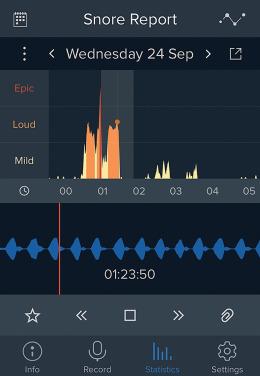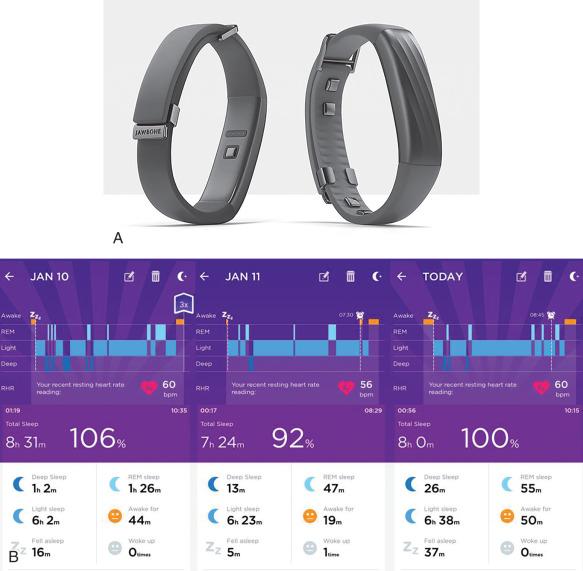Physical Address
304 North Cardinal St.
Dorchester Center, MA 02124
The aim of this chapter is not necessarily to provide the reader with information about the newest device, as it will be explored somewhere else in this book, but rather to provide a brief overview of one perspective in the process of innovating medical technologies and how it has been and could be applied in the future to the management of obstructive sleep apnea (OSA).
OSA provides a wealth of poorly met needs. From screening to diagnosis to treatment, there are a plethora of exciting opportunities for the potential innovator.
A diagnosis of obstructive sleep apnea syndrome (OSAS) has been estimated to affect 3% of women and 6% of men, with a much larger proportion of the population who may in fact suffer from undiagnosed problems with sleep-disordered breathing (SDB). In a population study of 3043 consecutive participants in Switzerland, the prevalence of moderate to severe OSA (≥15 events per hour) in the general population was found to affect 21% to 26% of women and 47% to 53% of men. Most notably, it has been estimated that 80% of the population remains undiagnosed with a potential 1.5 to 2 million cases that are missed each year.
Undiagnosed sleep apnea has been shown to have considerably higher medical costs than age- and sex-matched individuals. Indeed, a report published by a panel of experts at Harvard Medical School in 2010 estimates the annual economic cost of moderate to severe OSA in the United States to be $65 to $165 billion.
In retrospect, there is undoubtedly a mismatch between the size of the affected population and the current evaluation process. How can diagnosis be faster, readily available, and more affordable? How can we reduce the risk of attrition?
Several projects studying OSA biomarkers are currently under development with the final goal of developing possible blood, urine, breath, or other diagnostic biomarker tissue tests for OSA. For example, Shah et al. identified three differentially expressed serum proteins between 20 children with OSA and 20 children with habitual snoring without OSA. In a similar preliminary study by Jurado-Gamez et al., three proteins were identified that demonstrated increased expression in the serum of adult patients with OSA, whereas seven other proteins showed reduced levels when compared with controls. Taken together, these studies suggest that further efforts using proteomic approaches could be justified. Preliminary and encouraging findings have also been found using urinary samples obtained from children with OSA (n = 60) versus primary snoring (n = 30) and controls (n = 30), whereby investigators have identified 16 unique proteins that were differentially expressed in the OSA group. Validation studies have identified four of these proteins: kallikrein-1, urocortin-3, orosomucoid-1, and uromodulin. Moreover, detection of volatile compounds in exhaled breath represents yet another exciting technique that may provide noninvasive and potentially cost-effective means for screening, diagnosis, and monitoring of treatment outcomes in OSA. Indeed, preliminary investigations have revealed the presence of severity-dependent levels of inflammatory markers in exhaled breath condensate samples of both children and adults with OSA. There is no doubt that proteomic-based technologies offer unique possibilities for the development of screening and diagnostic strategies that should be clinically applicable to the evaluation and treatment of adult and pediatric sleep apnea. Using combinatorial biomarker discriminative approaches, the presence of OSA could be identified with a sensitivity and specificity that approaches 95% to 100%. Clearly, these exciting findings must be validated in larger independent cohorts, and such efforts are currently underway.
The utilization of ubiquitous smartphone applications may be another initial strategy for OSA screening and diagnosis. At the moment you read this, there are more than 2.6 billion smartphone users globally, and by 2020, this number is expected to be 6.1 billion led by growth in less mature markets. In The Creative Destruction of Medicine, Eric Topol provides an interesting description of how these digital technologies, given their wide availability and increasing processing power, will change the current health care landscape.
Sleep medicine is no exception, and coupled with the wide development of respiration, motion, oximetry, and audio sensors, it is no surprise that there are currently more than 100 applications (apps) that claim to evaluate SDB, with some already providing interesting initial clinical data, with acceptable sensitivity and specificity.
Although several questions remain about the medical use of mobile technologies—in particular, the best regulatory route and acceptance by the overall medical community and key opinion leaders, the major issue to be targeted at this point, as with many other so-called digital health domains, is to continue to expand their critical and adequate evaluation with clinical trials. This is a key step that most likely will require intense cooperation and guidance from experienced sleep specialists ( Figs. 75.1 and 75.2 ).


OSAS is characterized by an extremely heterogeneous collection of individuals who are affected by sleep-related breathing dysfunction. Not only do patients with OSA vary tremendously in terms of the severity and pattern of airway obstruction, but also there is great variability to the etiology, anatomic endophenotype, ventilatory loop gain effect, and response to therapy among individual patients. Once diagnosed with OSA, the ultimate goal in the management of these patients with SDB is to accurately and precisely select the most appropriate therapeutic option for each individual patient. Although drug-induced sleep endoscopy, sleep and awake magnetic resonance imaging, and pressure catheters have been reported, none is without significant issues, including cost, lack of availability, and perception by some of lack of adequate reproducibility of natural sleep, which preclude adoption in clinical routine settings. The question remains: How can we individualize the treatment of OSA? This clinical need presents yet another worthwhile opportunity for the innovator.
In 1981 Collin Sullivan, a physician in Sydney, Australia, invented the continuous positive airway pressure (CPAP) machine, a very effective treatment for OSA, considered the “gold standard” for its treatment at the time of this writing. Analyzed through the lens of patients and several medical colleagues, however, CPAP and most other solutions are usually considered less than optimal. CPAP is often not tolerated, and all other targeted interventions work only in a subset of patients.
Nasal EPAP devices consist of disposable one-way resister valves that are placed over the nostrils with an adhesive tape. These valves create positive end-expiratory pressure with minimal inspiratory resistance. The high-end-expiratory pressure contributes to upper airway dilation by creating resistance to expiratory nasal airflow, thereby creating a pneumatic stent that makes the upper airway more resistant to obstruction during ensuing cycles of inspiration. A recent meta-analysis shows that nasal EPAP reduced Apnea/Hypopnea Index (AHI) by 53.2%, oxygen desaturation index (ODI) by 41.5%, and improved lowest oxygen saturation by three oxygen saturation points. Generally, there were no clear characteristics (demographic factors, medical history, and/or physical examination finding) that predicted favorable response to these devices. However, limited evidence suggests that high nasal resistance could be associated with treatment failure.
Oral pressure therapy (OPT) devices are composed of a bedside console and soft polymer mouthpiece with tubing. The console contains a pump that creates a vacuum, drawing the soft palate anteriorly and stabilizing the tongue to reduce obstruction during sleep. By providing negative pressure to the oral cavity, the retropalatal airway is expanded by pulling the soft palate and tongue forward. Colrain et al. have shown OPT to significantly control OSA in a modest subset of patients. In their study, clinical success defined a priori as AHI reduction ≥ 50% and treatment AHI ≤ 20 was observed in 26/63 subjects (4/15 mild, 10/18 moderate, 12/30 severe). In these 26 subjects, the AHI median (interquartile range) was reduced from 26.2 (19.8–45.3) to 5.7 (3.6–10.0) and ODI was reduced from 19.2 (14.8–35.4) to 4.7 (2.5–9.0). Initial data by Schwab et al. suggest that patients manifesting an enlarged soft palate or exhibiting retropalatal airway collapse may be the best candidates for oral pressure therapy.
Become a Clinical Tree membership for Full access and enjoy Unlimited articles
If you are a member. Log in here